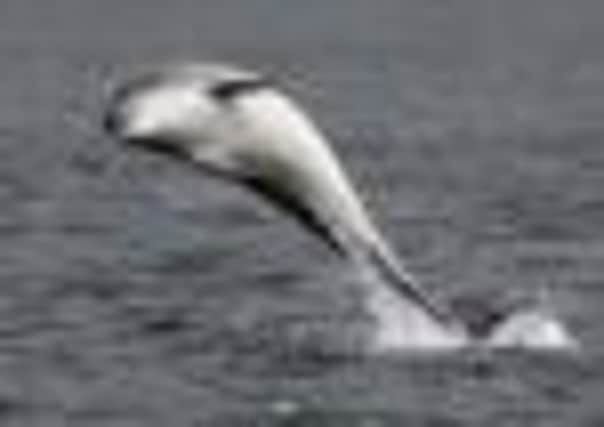Outdoors: Dolphin-spotting around Scotland


A few years ago when walking with my family along the coastal path just to the south-east of St Andrews in Fife we spotted a large school of bottlenose dolphins about 800 yards or so from the shore. The sea was enveloped in rolling mist, but the sun was beginning to burn it off, which seemed a good opportunity to scan the water with my binoculars in search of seabirds. But instead of gulls and terns, my eyepieces filled with the unmistakable profile of the rolling fin of a dolphin.
As the mist melted away many more dolphins appeared, some leaping spectacularly clear of the sea. It was an enthralling sight that was accompanied by shouts of excitement from our two children. As the dolphins moved across the bay, it was even possible to see the animals breaching clear of the water against the backdrop of the spires and buildings of St Andrews.
Advertisement
Hide AdAdvertisement
Hide AdBut this is not as surprising as it might seem, for dolphins can often be seen close to our coastal conurbations. On my regular visits to Aberdeen I almost always make a point of stopping off at the car park at Torry Battery which overlooks the harbour entrance. Here, especially in winter, it is not unusual to see bottlenose dolphins close to the two pier heads, and which seem amazingly nonplussed by the frequent passing by of oil supply ships. The Moray Firth is Scotland’s renowned spot for dolphins and on one occasion when walking along the beach by the village of Rosemarkie on the Black Isle, a solitary dolphin appeared so close to the shore that I could hear the noise of the air being expelled through the blowhole on top of its head.
Cetacean expert Vincent Janik of the Scottish Oceans Institute at the University of St Andrews tells me that there are two main populations of bottlenose dolphins found around Scotland. The largest group comprises just under 200 animals and is found along the east coast. As well as the already mentioned sites, other reasonably reliable places to spot dolphins include the mouth of the Firth of Tay (Broughty Ferry Castle is a good viewpoint) and also at Anstruther in Fife on the outer edge of the Firth of Forth.
A smaller population of around 50 bottlenose dolphins is resident on the west coast around the Hebrides. They comprise of two different groups, one consisting of around 15 individuals that live mainly in the Sound of Barra, whereas the other is double that size and ranges more widely throughout the Inner Hebrides and western mainland coasts.
“We are able to estimate the size of the bottlenose dolphin population by using photo-identification techniques that can differentiate between the unique nicks and notches on the fins of individuals,” explains Vincent.
Other types of dolphin are found around Scotland too – such as the common dolphin, white-beaked dolphin and Risso’s dolphin – but they tend to be more offshore in their habits and are therefore not seen nearly so often. Dolphins are long-lived animals and have only been studied in more recent times, which makes it difficult to determine any long-term trends in numbers, but indications suggest that at least the eastern Scottish population is probably stable.
Interestingly, historical literature provides little evidence of the occurrence of bottlenose dolphins in Scottish waters in the more distant past but whether this is because they were indeed absent, or is simply down to the lack of observer records or the animals being classed as porpoises, is unclear. What is certain is that they are top-end predators that consume fish, squid and crustaceans, and their future fortunes will always depend upon healthy fish stocks and clean seas.
At the moment scientists at the University of St Andrews are heavily involved in working with the offshore renewable sector and other stakeholders during planning processes so as to help mitigate any potential impact that marine windfarms may have on dolphins and the areas where they live.
The university is also engaged in research on acoustic communication by dolphins to determine whether man-made noise pollution from offshore activities has any adverse effect upon the animals.
Advertisement
Hide AdAdvertisement
Hide AdAll these studies will hopefully shed more light on our bottlenose dolphins and help develop strategies to ensure their protection. Our iconic Scottish animals represent the world’s most northerly resident populations, and with numbers standing at somewhere less than 300 individuals, there is no doubt that they are also among our most vulnerable creatures.